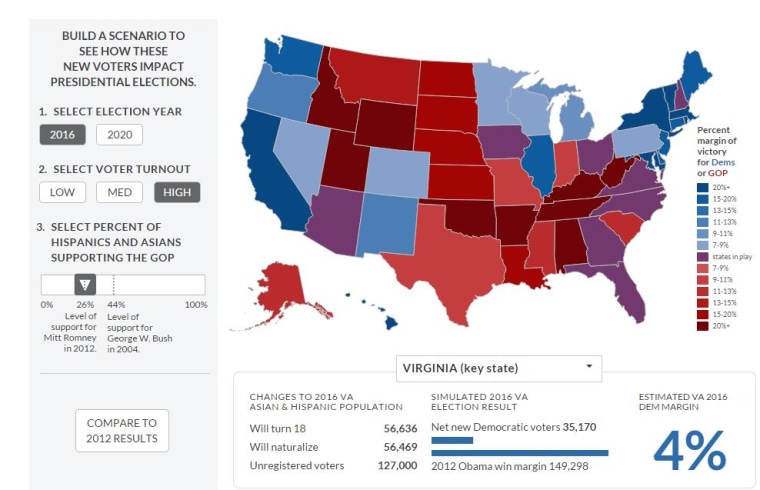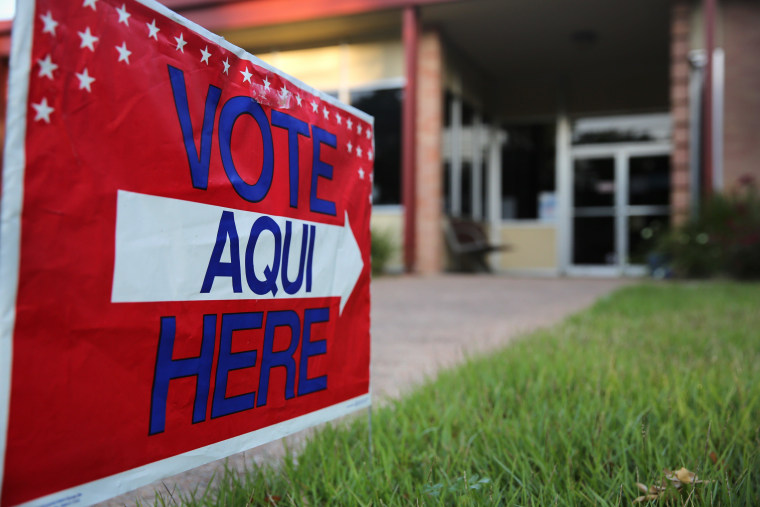A new map, released today, illustrates how the fast-growing Hispanic and Asian voting populations could impact the upcoming elections.
The Partnership for a New American Economy's interactive map shows how as many as 25.6 million new Hispanic and Asian voters could sway the vote in states across America in 2016 and 2020.
The map includes features breaking down election year turnout and anticipated party affiliation by racial group, and state-by-state. The site then calculates how many Asian and Hispanic Americans will turn 18 or naturalize by each election, and the number of unregistered voters.

According to the group, in 16 states, "there could be more new Hispanic and Asian voters by 2020 than decided the 2012 presidential result in the state." California could see more than 7,650,000 potential new Hispanic and Asian voters. In Texas, over 3,000,000 new Hispanic and Asian voters could join the rolls.
The Partnership of a New American Economy is a consortium of more than 500 bi-partisan mayors and business leaders with the goal of "making the economic case for streamlining, modernizing, and rationalizing" the U.S. immigration system. The mayors in the group represent cities that have a combined population of over 35 million residents.
